2,500-year-old female Siberian warrior is beheaded by excavator
Ancient 'wealthy' young woman was found laid to rest with her horse Remains and weapons by workers who accidentally dug up her burial mound.
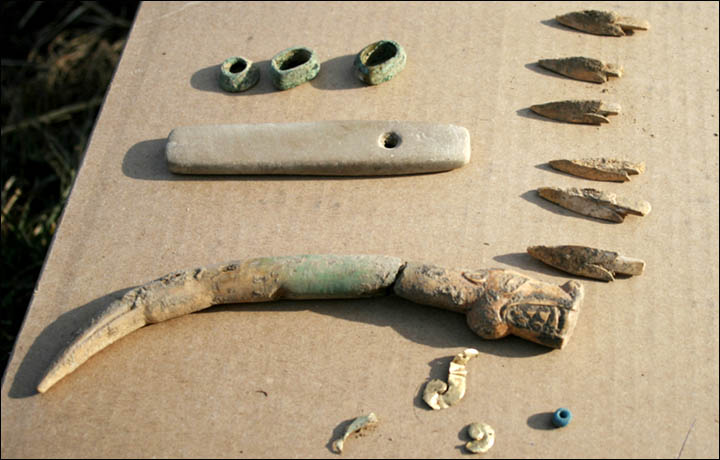
'Along with the remains we found beads, and wooden decorations in gold foil. The wood is decayed, but the foil is preserved. There is horse gear with bronze elements.' Picture: Vasily Oinoshev
The excavator smashed the prehistoric ceremonial burial chamber in the Altai Mountains, wrecking the grave of a suspected the grave of a suspected 16 to 20 year old combatant from the colourful Pazyryk culture. Local culture heritage official Dr Vasily Oinoshev said: 'Only the human head and upper part of the horse remained intact in the burial ground.Unfortunately, the rest was destroyed by heavy machinery.
'Apparently, this was a young woman, judging by the teeth. All of them are intact and in good condition. We attribute her to Pazyryk culture, and we have preliminarily dated the burial as being 2,500 years old.'
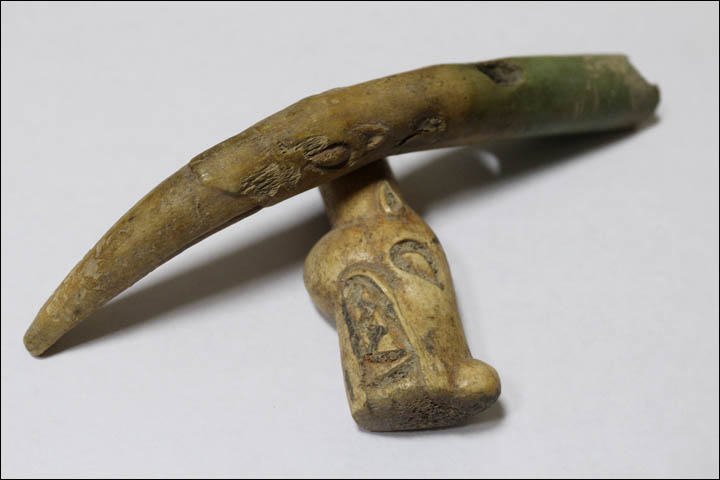
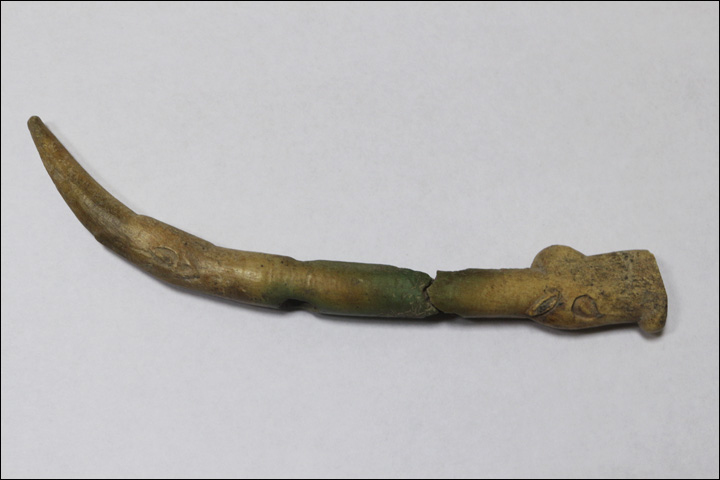
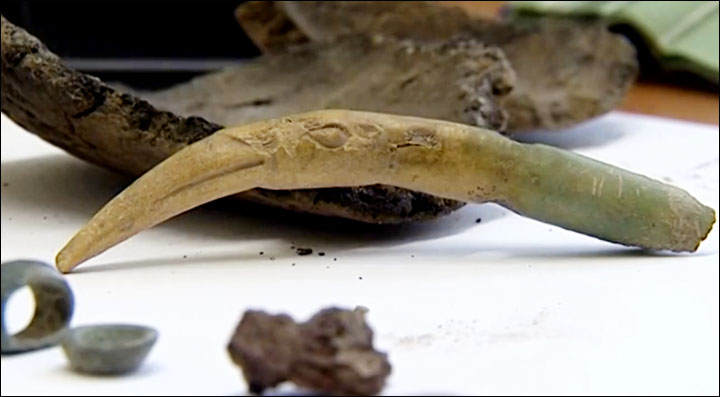
The cheek piece is decorated with carving - on one end, the head of a snow leopard or wolf, and on the other a griffin. Pictures: Vasily Oinoshev, El Altai
There is evidence in the shattered grave that indicates the woman was a 'warlike' fighter, with a seemingly elite status in her society, a standing that intrigues archeologists after previous similar finds - and has been linked by one noted scientist to descriptions from Greek physician Hippocrates about the Sarmatians, which, like the Pazyryks, were a Scythian grouping famed for their mastery of mounted warfare.
'Their women, so long as they are virgins, ride, shoot, throw the javelin while mounted, and fight with their enemies,' he wrote. 'They do not lay aside their virginity until they have killed three of their enemies, and they do not marry before they have performed the traditional sacred rites.'
Dr Oinoshev said: 'Along with the remains we found beads, and wooden decorations in gold foil. The wood is decayed, but the foil is preserved. There is horse gear with bronze elements.' Significantly, the archeologists found 'bone arrowheads' - her weapons, but it is also clear the grave was ransacked by ancient raiders.
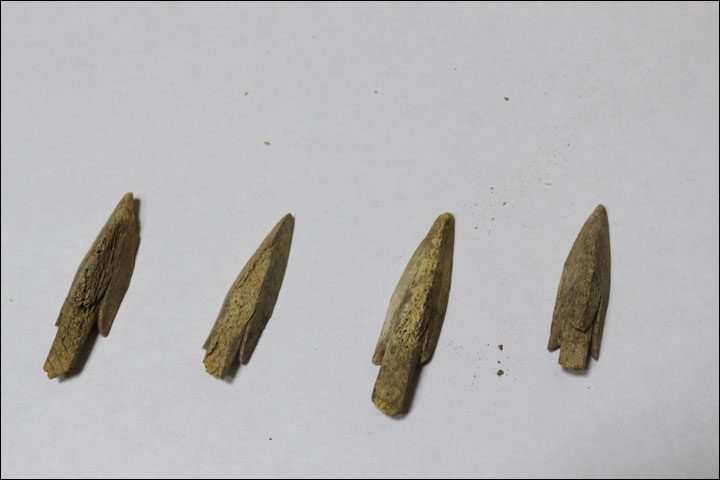
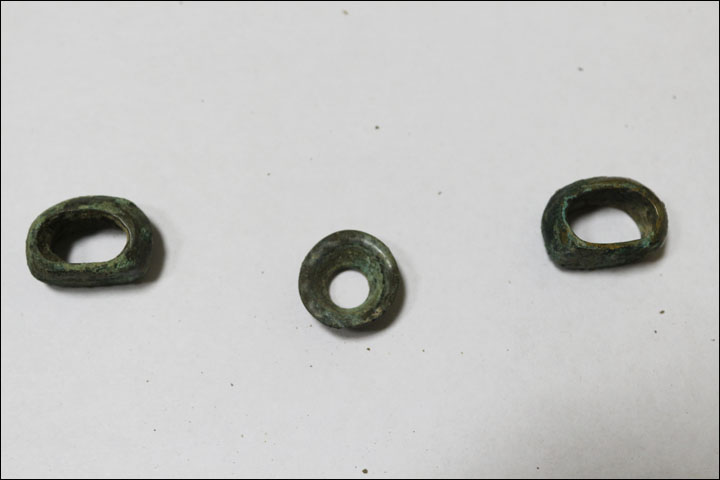
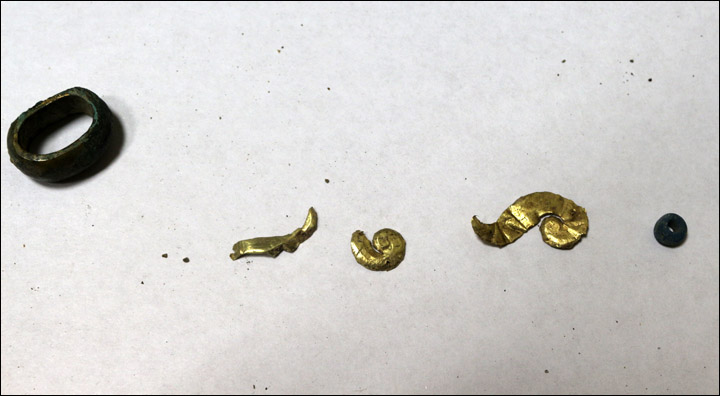
'Along with the remains we found beads, and wooden decorations in gold foil and bone arrowheads.' Pictures: Vasily Oinoshev
There was an embossed cheek piece made of antler - part of the ancient bridle set. This was to obscure her horse's hind view, to allow it to race. 'The cheek piece is decorated with carving - on one end, the head of a snow leopard or wolf, and on the other a griffin. There was pottery, only shards left, and some leather items, decayed, but it is clear that they were embossed.'
Dr Oinoshev, head of the Agency for Cultural and Historical Heritage in the Altai Republic, explained: 'The mound was 8 to 10 metres in diameter, the depth of the burial was 3.2 meters. There was also a wooden construction - 2 x 2 metres. We presume that this was a rather wealthy girl, but that the burial chamber was robbed in ancient times.'
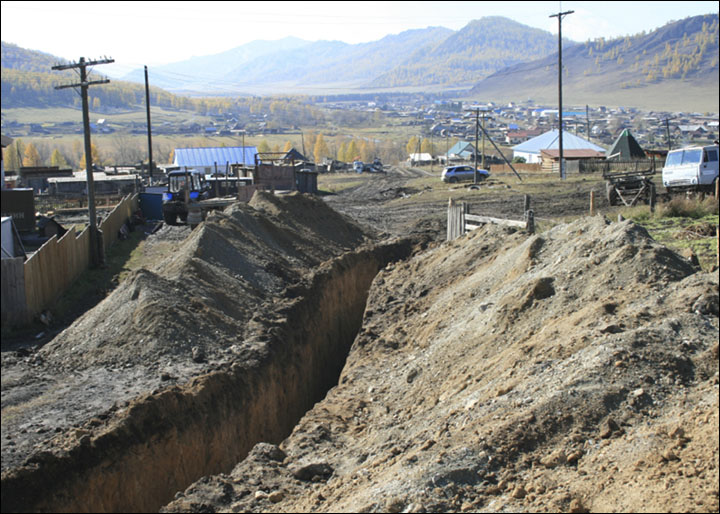
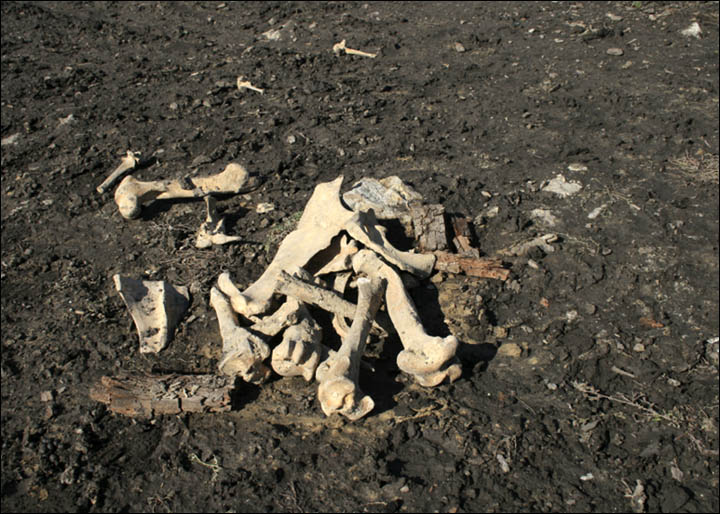
The workers smashed through the ancient grave while digging a trench for a new water pipe near Bargash village. Pictures: Vasily Oinoshev
In other words, the grave would have had more valuable items in it - as found in a handful of similar burials which remained intact - but that these were stolen by ancient raiders.
'The cheek piece was broken and its parts were separated. The bones of a horse and woman were partially mixed. Gold foil remained only under the skull. All this tells us that the burial was robbed long ago. If we compare this with other Pazyryk sites, there are really big burial mounds of Pazyryk elite: they are 50-60 metres in diameter and you can see that they were really rich. This girl was rather wealthy, not a common member of the society, but also not extremely rich.'
He said: 'We plan to pass the bones to Gorno-Altaisk State University for the further research. Other finds will be passed to the local museum.'
The workers smashed through the ancient grave while digging a trench for a new water pipe near Bargash village, work that was undertaken without prior consultation with archeologists in a region famed for ancient graves, many of them preserved by permafrost.
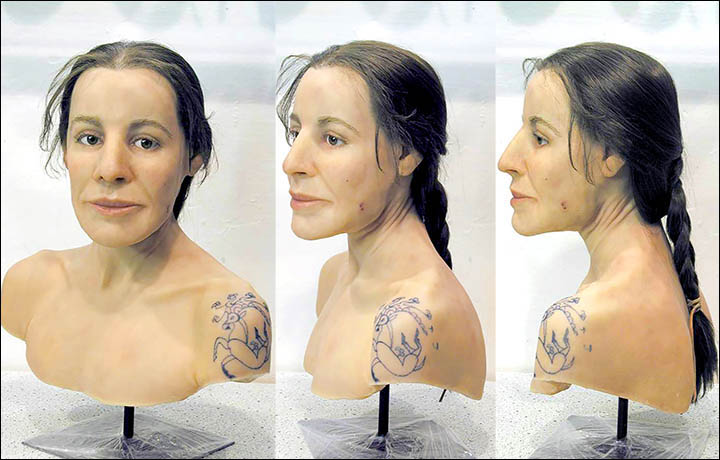
Dr Natalya Polosmak, speculated the 'teenage' warrior could have belonged to an elite all-female corps of warriors within the Pazyryk culture. Picture: Marcel Nyffenegger
'The workers did not know that there was a burial ground, they accidentally stumbled upon the remains,' he said.
In other similar but intact graves in the Altai Republic, archeologists have suggested a likeness in these 2,500 year old women to the fabled all-female virgin Amazon warriors of known to the Ancient Greeks. In one case, found in 1990, in the ancient Ak-Alakha permafrost necropolis, nine horses were discovered buried with a woman, to escort her to the afterlife, along with shields, battle axes, bows and arrowheads.
Intricate taxidermy techniques were used by Swiss expert Marcel Nyffenegger to recreate the face of this female fighter believed to be aged 16. Renowned Siberian archaeologist, Dr Natalya Polosmak, speculated the 'teenage' warrior could have belonged to an elite all-female corps of warriors within the Pazyryk culture in this mountainous region of southern Siberia.
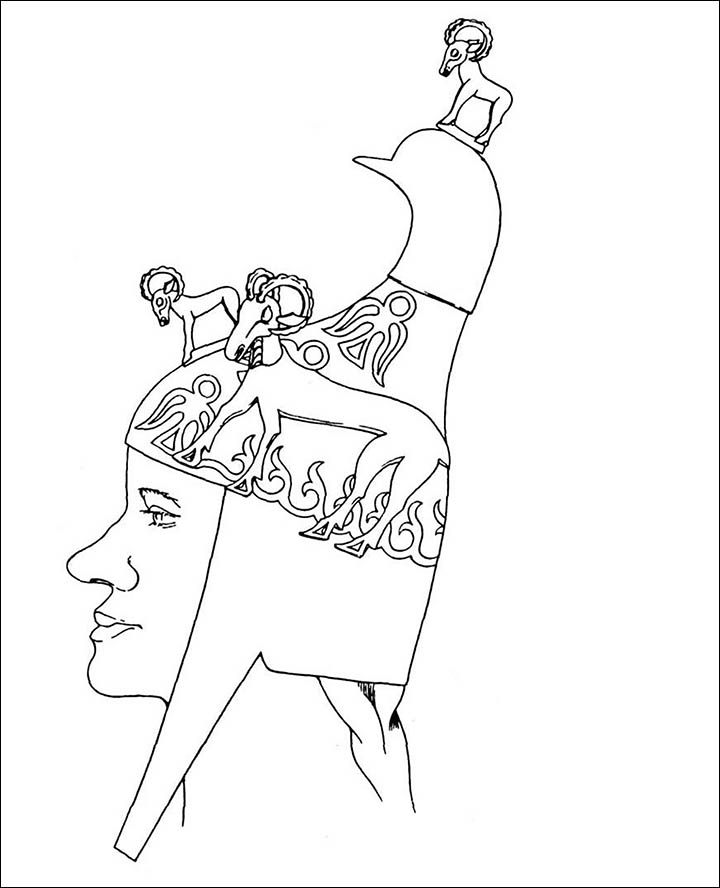
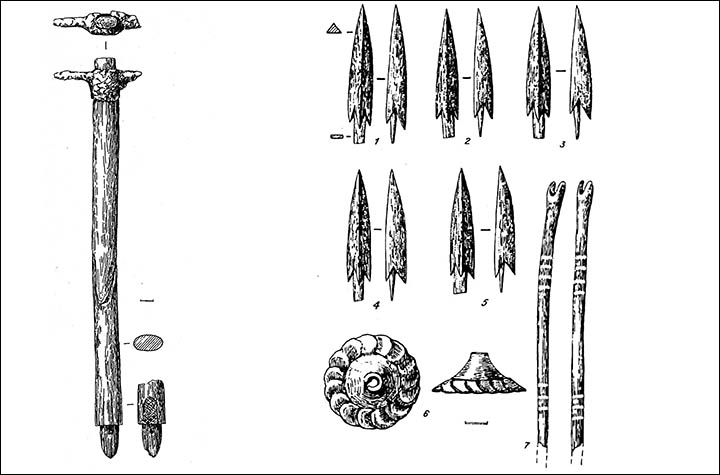
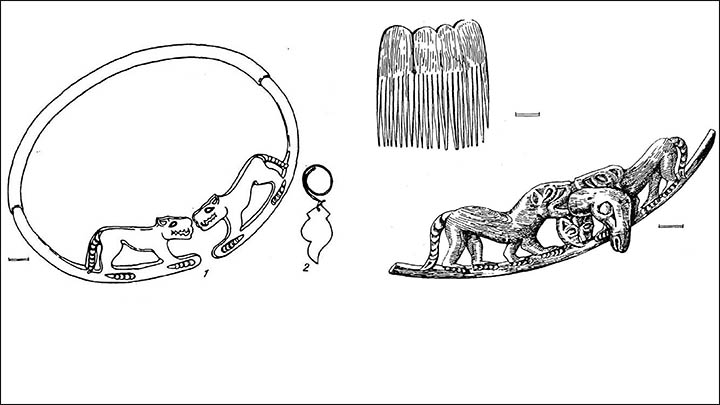
In other similar but intact graves in the Altai Republic, archeologists have suggested a likeness in these 2,500 year old women to the fabled all-female virgin Amazon warriors of known to the Ancient Greeks. Pictures: Natalya Polosmak
While other women were buried in elaborate graves, only a few have been found with weapons, believed to denote them as warriors.
'The burial of a woman in riding clothes, and escorted by her horses, is not totally unexpected for the time, which was known for multiple mentions of the legendary Amazons,' said Dr Polosmak, from the Institute of Archaeology and Ethnography at the Siberian Branch of the Russian Academy of Sciences.
'Perhaps the Ak-Alakha burial has discovered representatives of little known members of a Pazyryk elite, in which women - for social and economic reasons - were allowed to be more war-like'.
But citing Hippocrates, who lived approximately from 460 BC to 370 BC, she said there was 'another explanation' of this burial, namely that 'young girls' were deployed as 'warlike' warriors, but later when they wed, after slaying three enemies, they gave up fighting. 'This is why burials of armed women are exceptionally rare, and must belong to the very young women whose lives were tragically and unexpectedly interrupted,' she said.
In other words, they died in combat: the possible fate of this 'excavator' warrior. The clothing does not survive in this case, but in the earlier case in Ak-Alakha, the elite female warrior was dressed in male clothing.
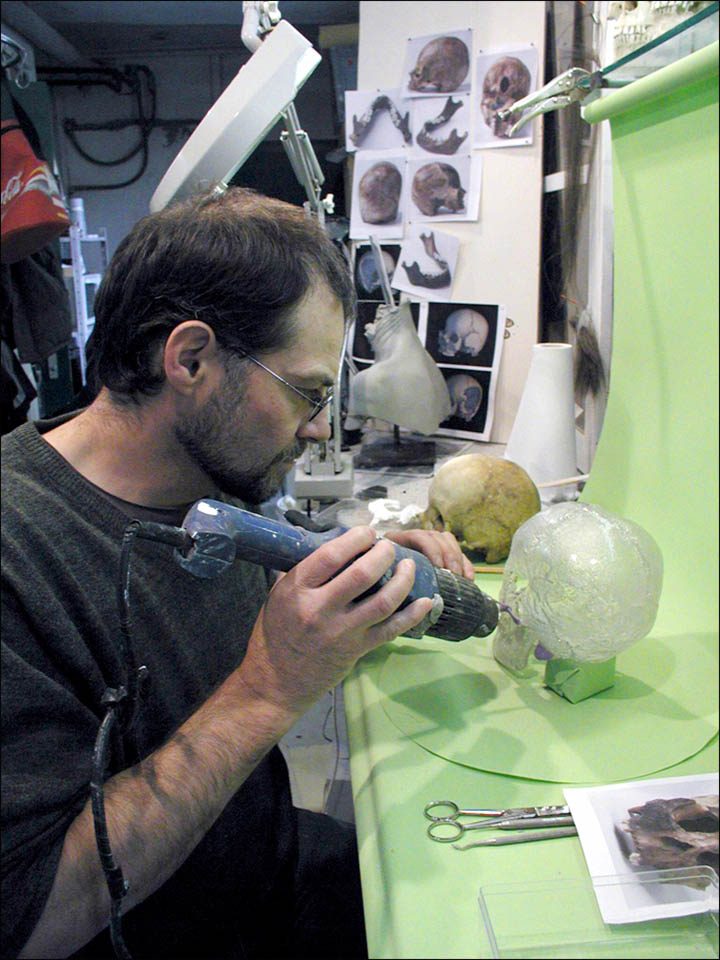
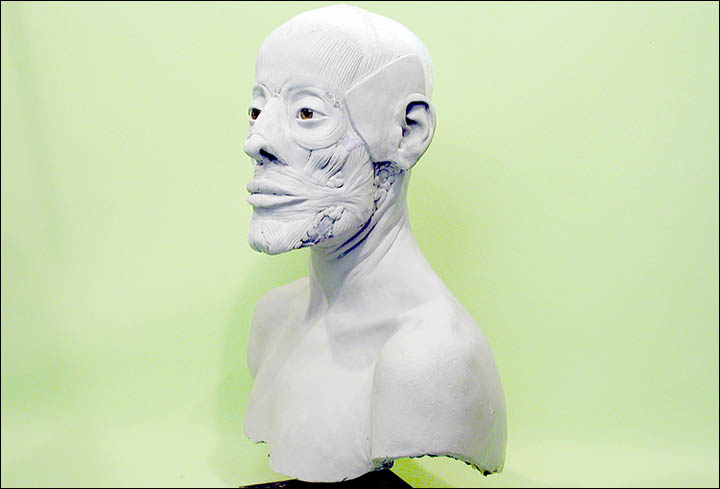
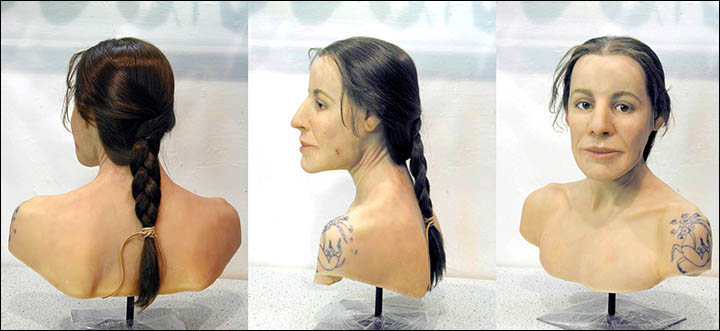
Intricate taxidermy techniques by Swiss expert Marcel Nyffenegger to recreate the face of this female fighter believed to be aged 16. Pictures: Marcel Nyffenegger
The Novosibirsk archaeologist was the first to suggest the woman could have been part of a privileged society that allowed burials with weapons. Dating back to Greek mythology, very little is known about such Amazon warriors, with different accounts for when they existed or even where they were found. Some say they lived on the shores of the Black Sea, in what is now Turkey, while others place them in Libya or in the border lands beside Ukraine.
In Roman history there are various accounts of Amazon raids in western Asia, and their name has become a term for female warriors in general. Notable queens of the Amazons were said to include Penthesilea, who participated in the Trojan War, and Hippolyta, whose magical girdle, given to her by her father Area, was the object of one of the labours of Hercules.
1 comment:
the reconstructions of Marcel Nyffenegger aren't the face of this recently found female fighter. However alls the female faces above are from the alder reconstruction of the Ak-Alacha findings.
Post a Comment